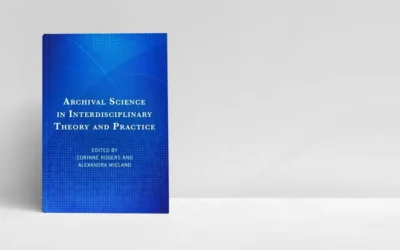Record Filing Methods and Maintenance
Margot Note
The functions of records maintenance include organizing and filing records and identifying which records to retain and for how long.
Current records should be arranged for efficient retrieval. Deciding how to file records can be straightforward; it begins with carefully examining the records currently in use. Are they already filed in a way that allows for quick access? Is the current system logical, consistent, and convenient? Could a new employee interpret and understand it? If so, there is no need to change the system. An existing system that works well, or frankly reasonably well, for the organization should be left in place. On the other hand, if the existing system is cumbersome, idiosyncratic, or nonexistent, the records require another system.
Filing Methods
The first step in setting up a new arrangement for current records is to focus on the daily operational needs of the organization. There are three primary filing methods: department or function, subject, or chronology. An organization might choose one of these arrangement methods or, more likely, combine two or all three methods. Most records may be filed according to the department that produced them and subdivided by topic, subject, or chronology.
Filing records by department or function is usually the most successful arrangement method. It has the advantage of clearly demonstrating the organization’s activities, functions, and structure and is the preferred arrangement for archival records. In addition, this method brings together all records documenting a specific activity within the organization.
An organization with a less formal structure might file its records under topic headings that reflect its work. This arrangement poses problems as subjects overlap or intersect or the list of subjects becomes unwieldy. However, this is a successful system if the subjects are limited in number, clearly defined, and distinct from one another.
A small, narrowly focused organization can file its records chronologically. This method does not work well for large, diversified, complex organizations. It is, however, adequate to meet the needs of institutions that deal primarily with single issues, topics, or projects and whose records are not voluminous.
Questions to Ask
When developing standardized file plans, it is also essential to consider all the records created daily at the organization. For example, how are important files stored: on individual computers or shared servers? Are files named in a standardized manner? How are copies or versions of a record identified?
A standardized policy across the organization will improve its ability to find important files. In addition, having a policy enhances the organization’s ability to meet its business, financial, and legal needs and improves access to its archival records.
Determining a Filing System
Because each filing method has advantages and disadvantages, selecting an appropriate system examines the characteristics of the organization’s recordkeeping practices. First, consider how records are used or called for. The nature of the records and how they will be requested should be the first determining factor in your system selection. Next, examine how many records are maintained and the organization’s size. The organization’s size usually dictates the number of individuals responsible for filing records and those authorized to access the files. Usually, the larger the office, the greater the number of people who will process and use the records. Lastly, consider who uses the records. The system selected should be appropriate to the employees using the records. For example, a subject classification system may benefit the records best defined by distinct, specialized topics. In contrast, records that fall into easily identified groups and are accessed by many employees are better arranged by other methods.
No matter what filing system is chosen, organizations should set up consistent categories which accommodate documents created and stored in various paper and electronic formats.
Margot Note
Margot Note, archivist, consultant, and Lucidea Press author is a regular blogger, and popular webinar presenter for Lucidea, provider of ArchivEra, archival collections management software for today’s challenges and tomorrow’s opportunities. Read more of Margot’s posts here. And stay tuned for the release of her upcoming book, The Digital Decisive Moment: Transformative Digitization Practices—the next title in our Lucidea’s Lens series.
Never miss another post. Subscribe today!
Similar Posts
Ensuring Long-Term Access to Digital Archives
Long-term preservation is essential to ensure digital archives remain accessible and usable.
5 Best Practices for Personal Digital Archiving
Archivists have developed best practices for organizing and maintaining personal digital archives, safeguarding digital legacies for future generations.
Interview with the Editors: Wieland and Rogers on Interdisciplinary Archival Science
Alexandra Wieland and Corinne Rogers co-edited Archival Science in Interdisciplinary Theory and Practice. My interview with them is below.
The Importance of Personal Digital Archiving (Plus Steps to Get Started)
Archivists often help individuals manage and preserve digital files of personal significance.




Leave a Comment
Comments are reviewed and must adhere to our comments policy.
0 Comments